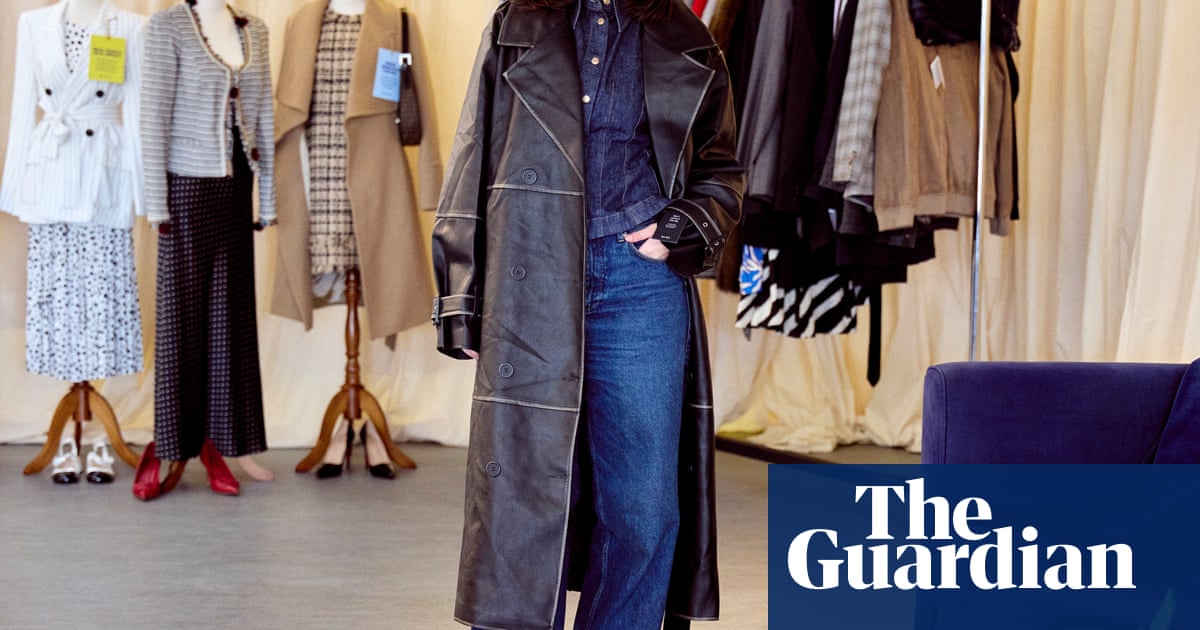Jewel-encrusted Miu Miu sunglasses, an Yves Saint Laurent handbag, or a Louis Vuitton suit with the tags still on all sound like once-in-a-lifetime op shop discoveries, but all three are included in the approximately 20,000 items an Australian charity shop made available for sale online on Thursday.
Vinnies Finds is a project four years in the making, says the Vinnies NSW CEO, Yolanda Saiz. “This is a really high-end e-commerce platform that we’ve taken the time to build out,” she says. “I think aesthetically and visually, it’s going to be a fantastic experience for our shoppers.”
While several other Australian charity shops – including Vinnies Victoria and Salvos – already sell online, Finds is, by design, a slick, curated experience.
Rather than selling a mix of bric-a-brac, electronics and apparel, the website has the look and feel of a multi-brand fashion website, like the Iconic or Asos – with the service expectations to match. The charity will dispatch orders on the day of purchase, and shipping is free over $100. Clothing, accessories and footwear are all easily searchable by size, brand and colour, with an option to search by condition, ranging from “as is” to “brand new with tags”.
Developing the website has been a monumental undertaking that has required a complete reworking of the charity shop’s backend logistics. Saiz says Vinnies NSW recruited 15 new people, a mix of volunteers and full-time specialist staff, to design and build the website, and now to sort, select, photograph, price and upload each individual item.
Vinnies set up a new Sydney warehouse specifically for its e-commerce platform, which has five cameras flashing “morning to night”, says the Vinnies communications manager Kate Pascoe. There, its sorting team sifts through “trucks and trucks” of donations daily, sending some to the 200 Vinnies stores around NSW, and uploading others to be sold online.
New items will be added daily as donations are processed. This constant turnover of product is reminiscent of ultra-fast fashion websites like Shein or Temu; but the Vinnies retail strategist Tiffany Hua says the unbranded items sold new by those websites are unlikely to make it into Vinnies stores. Customers simply aren’t interested in buying unlabelled items, and they’re often in conditions too poor to sell, she says.
Saiz hopes the high-end items available on Finds will lure shoppers who would usually scour Depop or the RealReal for secondhand designer pieces – or just buy clothing new.
Having a premium, convenient environment where all the sorting has been done for you means that Vinnies can charge higher prices for more valuable donations, but Saiz says: “You’ll find pricing that is still very, very good given the … retail price of those items.”
An Yves Saint Laurent Muse handbag that is $150 on Vinnies Finds is listed at $1,200 on luxury resale site Vestiaire Collective. While the brand no longer make the exact style, a similar Saint Laurent Y Tote retails for $5,950 new.
Hua says that at present, the charity does not have the ability to verify the authenticity of luxury items, but some donations do arrive with certificates of authenticity. Designer goods of uncertain origin are listed as unauthenticated on the website.
Saiz emphasises that the site also has everyday items in a wide range of sizes – at prices in line with op shoppers’ expectations. The aim, she says is to “open up to new customers, younger customers, whilst not forgetting our existing customers”.
after newsletter promotion
Saiz sees Finds as a logical progression from the changes the charity has already implemented in their bricks and mortar stores. “We’ve done a lot of revamping and remodelling of a lot of our shops in order to make that experience great for our customers,” she says.
Finds is about offering “a type of shopping experience that many people want these days, which is to be able to jump online and … [shop] conveniently from home”.
“We know that there are more players in the market, there are more options for people to do peer-to-peer trading of clothing or selling of clothing … So of course we need to be able to respond to that.
“So really this is part of us making sure we’re … future-proof and future ready.”
Although online secondhand shops and privately owned thrift players like Savers mean charity shops face more competition, these shifts have not had the same impact on Vinnies’ donation pipeline, Saiz says. “We still receive really fantastic donations, which we’re really grateful for.”
Dr Yassie Samie, a researcher in RMIT’s fashion department who specialises in the circular economy, agrees. Charity shops receive their donations from so many different places, including deceased estates, that eBay and Depop are unlikely to put a dent in the quality of donations. “A lot of people are tempted by the idea of resell,” she says, “but then eventually it’s just really demanding – so they give things away to charities [instead].”
Samie thinks charity shops moving online is a positive development. “We have this romanticised image of charity shops – you go there for a hunt, you find beautiful pieces. That is still the case. But the truth is we’re living in very tough economies. There’s so many products. If the idea is to make reuse a common practice and widespread, then we have to make it … available, accessible, convenient.”
However, Samie cautions that shopping secondhand, even for charitable causes, isn’t enough to solve the problems of overproduction and overconsumption. “This is not supposed to be a guilt-free … area for us just to keep buying and throwing away,” she says. “Circularity is not only about recirculation – it is about slowing down.”


